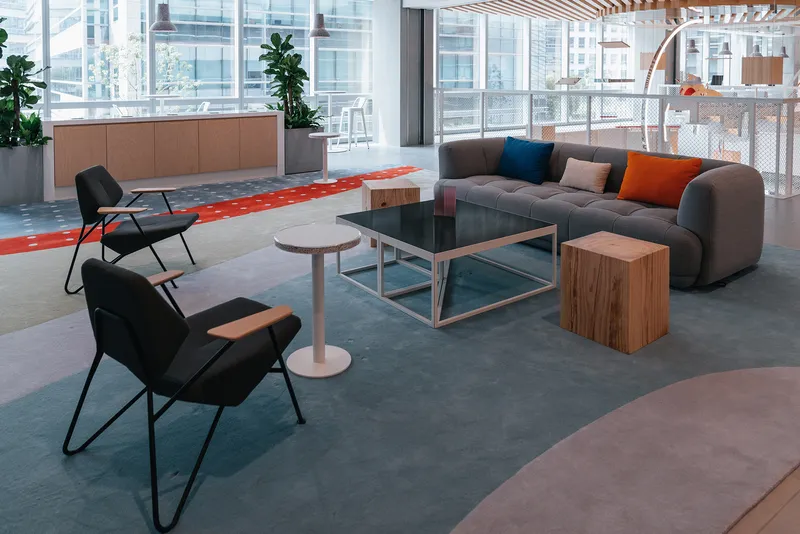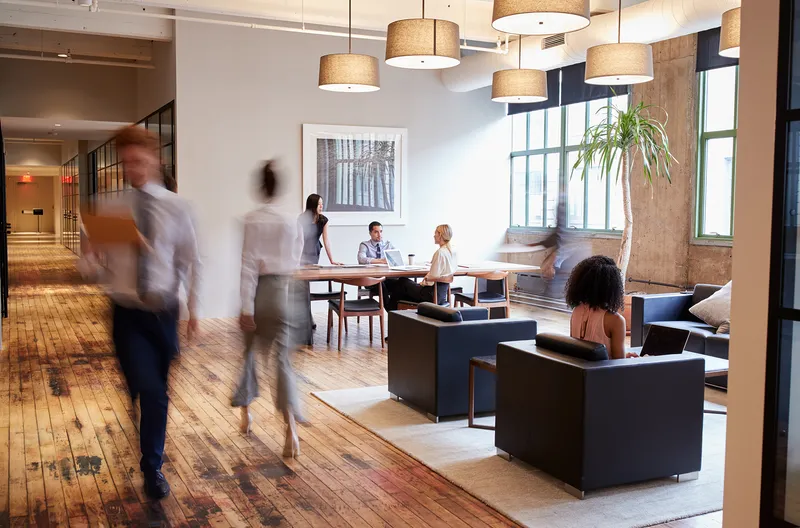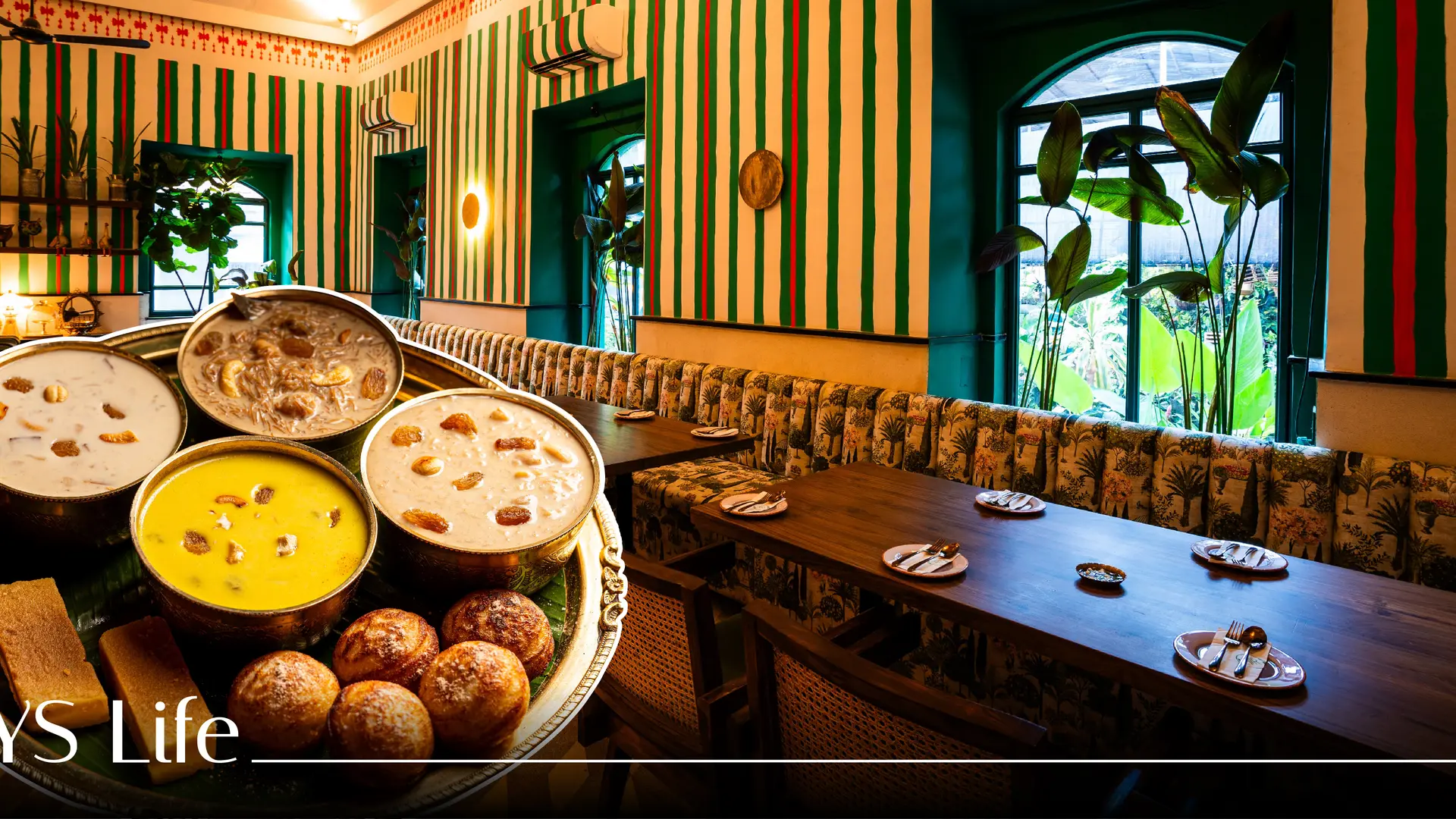Office peacocking: Can snazzy workplaces get employees back to office?
Plush sofas, pretty lights, food and beverage stations, and cosy corners—companies are looking to get employees back to the physical workspace by focusing on flashy and snazzy additions. But is that enough?
What comes to your mind when you think about the office? Coffee breaks, sure. But endless rows of cubicles—stacked with personnel working long hours—is a common sight in every workplace.
However, post the COVID-19 pandemic, the new order for workplaces looks dramatically different, with employees seeking greater autonomy and creative freedom from their employers.
Remote work became a mainstay during the pandemic to ensure business continuity, and employees, too, became accustomed to flexibility in their schedules and a promise of work-life balance.
Now that the pandemic is over, offices are attempting a new-age design approach to entice employees back to the physical workspace. Think plush sofas, pretty lights, food and beverage stations, and cosy nooks.
This practice also has a name: office peacocking.

Now that the pandemic is over, offices are attempting a new-age design approach to entice employees back to the physical workspace. Think plush sofas, pretty lights, food and beverage stations, and cosy nooks | Image source: Shutterstock
“Much like a peacock showing off its dazzling feathers, companies are amping up their workspaces with modern design, top-notch amenities, perks to outshine competitors, and win over the workforce,” Sagar Pandey, Head of Human Relations at Swastika Investmart Ltd, an online trading platform, tells YS Life.
With a growing focus on work-life balance, even within the workplace, offices are increasingly looking at benefits that tie into health and wellness.
“This involves filling the space with plants and natural light to create a connection with nature by painting brand or industry-related murals or motivational quotes to boost mental well-being,” says Ramneek Ghotra, Chief Growth Officer, Finvasia.
The Chandigarh-based global enterprise operates across finance, healthcare, technology, blockchain, and real estate sectors.
Others are paying more attention to the food and beverage offerings in their cafeteria, besides going the extra mile to include fitness facilities. For instance, Razorpay offers live food stations every working day, while offices like Xiaomi and Flipkart offer free meals and snacks.
“Many offices are now making sure there's variety in cuisine but, at the same time, healthy food options are also a part of the menu. They are also building gyms inside the workspace. Besides, there's also an increasing trend of wellness, meditation, and even gaming zones,” highlights Sonaali Bhatla, Co-founder at Nori Narrative, a Delhi-based architecture and design studio.
That's not all.
Creative agency Boch & Fernsh has a recharge room with beds at its workplace in Mumbai where employees can unwind and rest. Myntra’s workplace has an entertainment zone for playing sports, including snooker, cricket, table tennis, badminton, and football.
While these additions sound promising, is ‘office peacocking’ an effective way to ensure employees get back to the physical workspace?
Creating an engaging space
Many employers believe office peacocking is the best way to make employees feel valued, comfortable, and inspired to do their best work.
“Offices are increasingly focusing on having flexible and open spaces that facilitate collaboration along with quiet zones to concentrate. Comfort and ergonomics are prioritised with high-quality furniture and cosy break areas,” mentions Ghotra.
A design refresh with cosy nooks and great-looking furniture can be a big draw for employees. Workspaces are also going a step ahead to invest in art and decor pieces to enhance aesthetics. There's also the strategic use of colour to influence mood and behaviour.
Preksha Singh, an advertising professional from Mumbai, says, “My workspace was previously dull, boring, and so cramped. Ever since we moved into a new office, things have started looking up. It's an inviting space where there's so much colour and vibrancy, state-of-the-art coffee machines, snazzy meeting rooms, and whatnot. I enjoy working there much more now.”

Many employers believe office peacocking is the best way to make employees feel valued, comfortable, and inspired to do their best work | Image source: Shutterstock
Periodic updates to office infrastructure may become necessary to keep pace with evolving trends and expectations, points out Kavitha Suresh, Assistant General Manager (workspace and warehousing), Crown Worldwide Group.
The global company is dedicated to simplifying international living and business with services like moving and relocation, workspace management, storage of fine art, and more.
However, she believes office peacocking can only work for a limited time because of high-cost challenges.
“It sets a high bar for infrastructure and necessitates substantial investments. Therefore, while this trend may initially attract employees back to the office, organisations must carefully weigh these investments against the expected returns,” she adds.
The need of the hour
Focusing on aesthetics and design elements is essential but not the only solution to ensure employees get back to the workplace.
“While it's always nice to go to a space that's peppy and vibrant, I would rather appreciate it if my employer is focused on my health and well-being and extends more flexibility in deadlines. Sometimes, the pressure is so much that we've had to stay at work for 15-16 hours a day, and it takes a toll on our health,” shares Khushbu Sahay, a project manager at a multinational in Mumbai.
For true impact, it's important to focus on what motivates employees—clear communication, growth opportunities, and a healthy work-life balance. A snazzy office is a perk, not a replacement, reiterates Pandey.
On the other hand, Aparna Jain, Associate Professor and Head of the Department of Business Studies at Mumbai’s SK Somaiya College, disagrees that a makeover in office design can enhance productivity.
Instead, she believes the comfort of working from home—away from a toxic environment—where there is greater flexibility to manage personal responsibilities is unmatched.
“In a professional setting, too much comfort might distract employees from their work. Instead, fostering a work culture that balances personal and professional life is crucial. Offering flexibility, allowing employees to choose tasks that align with their interests and talents, and promoting growth every working day is essential,” she recommends.
All in all, peacocking is a strategy used by companies who want to attract employees back to work in an insincere manner, says Amit Krishna Gulati, Co-founder and Director at Incubus Consultants—a multidisciplinary architecture, space design, and new product development consultancy.
“People require a space that will set them free, where they can talk to anyone they want to, and are free to collaborate with others. Offices need to create an environment where ideas are sparked, and it's a joyful space to be in, not just visually,” he advises.
Elaborating on the subject, he adds that the biggest challenge for them as workspace designers is to understand the company's culture but also to remember it isn't about solving one person's needs.
“Some people find comfort in order, while others find more freedom in disorder. Offices are ultimately for humans who want agency,” he concludes.
Edited by Suman Singh







